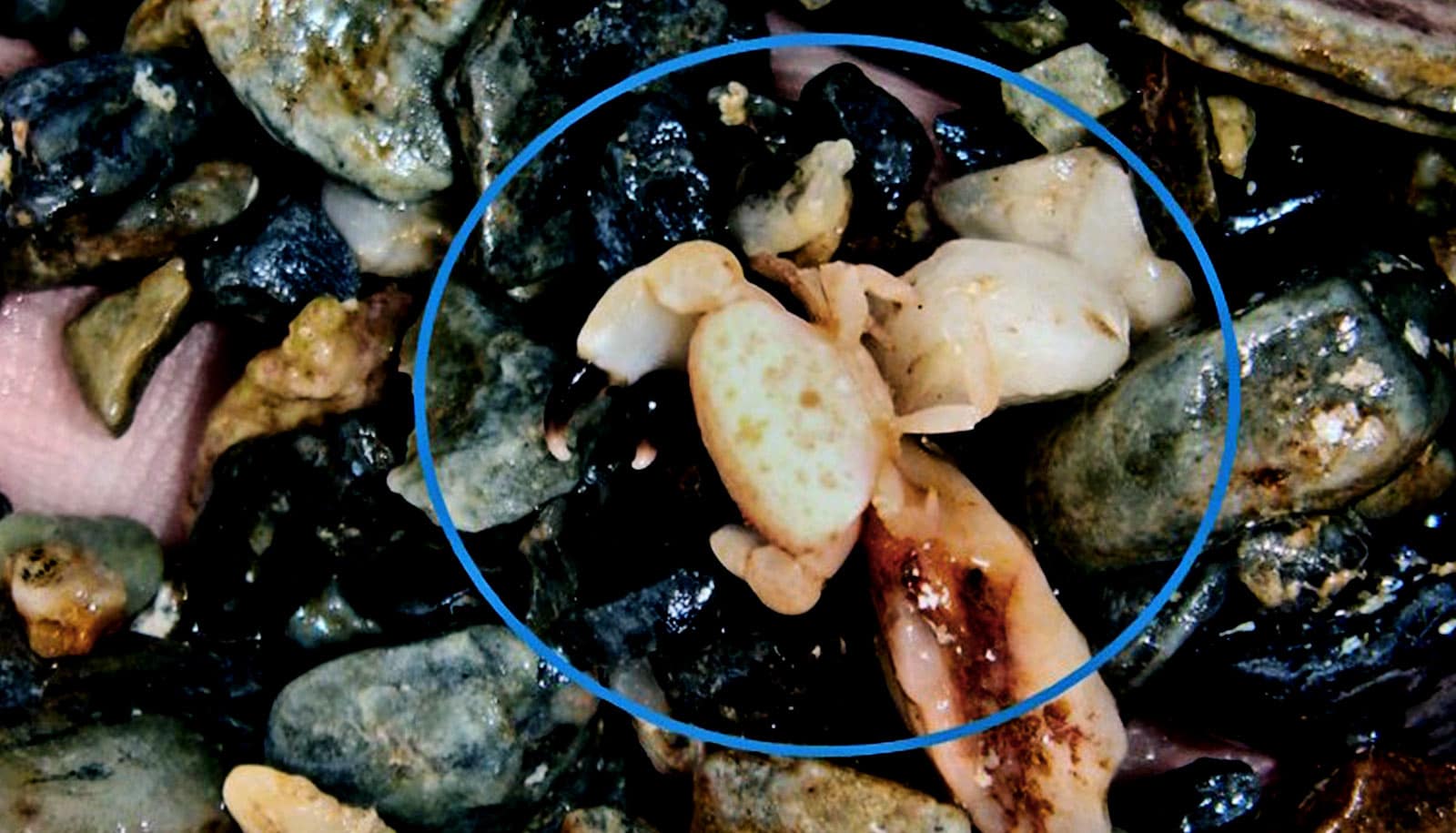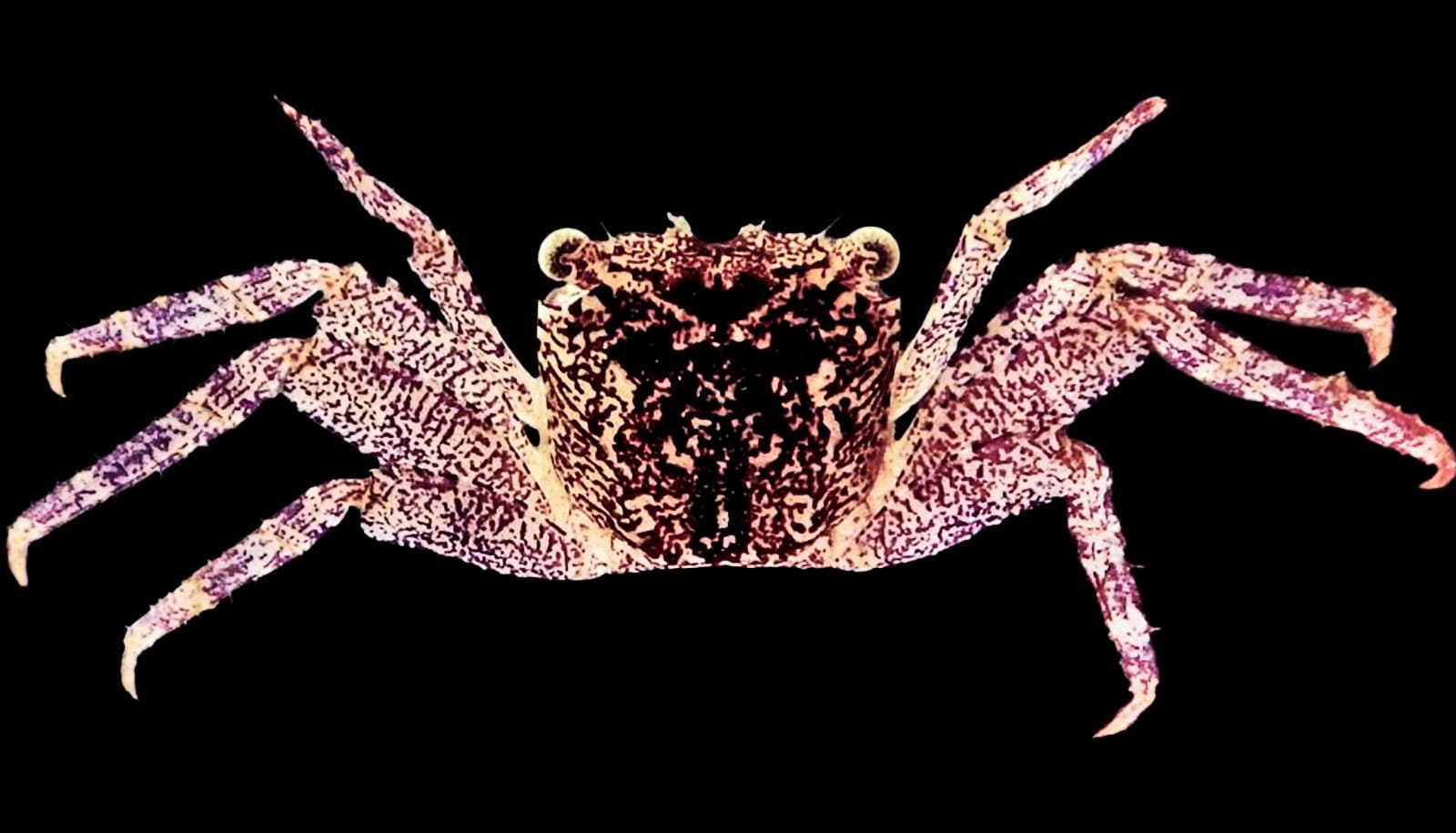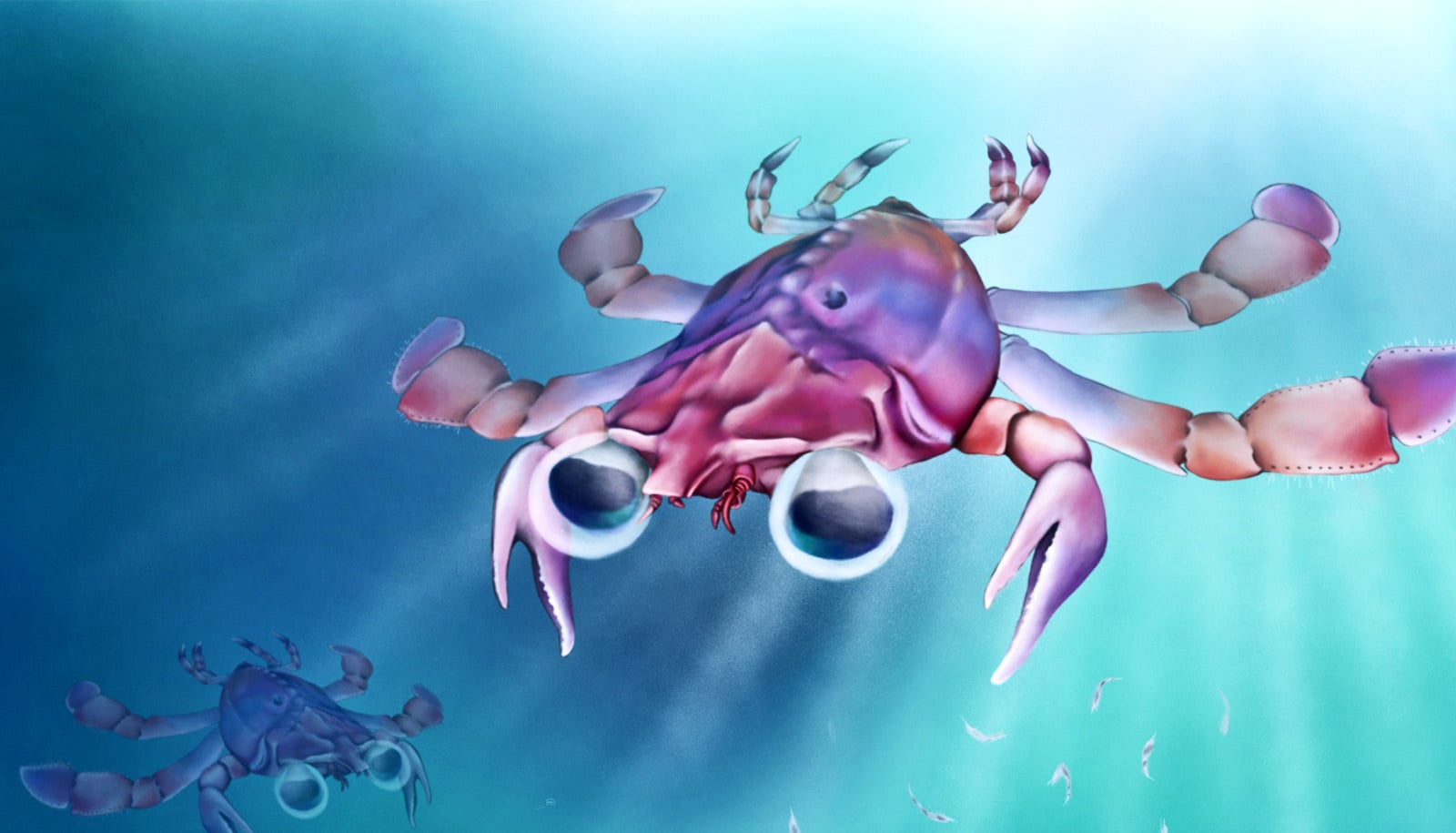Mabui calculus, a new genus and species of xanthid crab is unique among the 7,800 species of known crabs in having strongly asymmetrical male and female reproductive structures, researchers report.
“Male crabs have a pair of reproductive parts called gonopods while females have a pair of vulvae. All crabs mate in the “missionary position,” so the gonopods pump sperm into females for internal fertilization of the eggs. This was the accepted orthodoxy until our discovery—a small Japanese crab has evolved to do this very differently,” says Peter Ng, a professor and world-leading expert in crustaceans and head of the Lee Kong Chian Natural History Museum at the National University of Singapore.
The researchers first saw this nondescript little xanthoid crab—which was about 6 millimeters (about .2 inches) wide—more than a decade ago in the high-energy surf zones in Okinawa in Japan.
“When we took a closer look at these crabs, we found the males and females crabs have markedly asymmetrical male gonopods and female vulvae—one member of each pair was normal while the other was strongly reduced. And they form matching pairs,” Ng says.
“The right male gonopod is long and well developed, while the left one is much smaller. The left female vulva is large and round, while the right one is lost in most of females. This is the only way the crabs can mate effectively. The evolution of asymmetrical reproductive parts is not known for any crab, and this is truly amazing in nature.”
The research team collected over 50 specimens, including females with eggs, to conduct further studies. It took the scientists a decade of studies and comparisons to decipher what this “sexy crab”—the scientists’ moniker for the animal—is and to give it a formal scientific name—Mabui calculus.
“In the Okinawan dialect, ‘Mabui’ means soul, and local folklore has it that when people are deeply shocked, they ‘drop their Mabui’. This exactly describes our feelings when we first discovered this fascinating little crab. It took a lot of work before we realized that this animal is not an anomaly [or mutation]… It was real, and natural,” says Tohru Naruse, associate professor at the Tropical Biosphere Research Center, Iriomote Station, University of the Ryukyus.
“Just when we thought we know crabs well, we find one that blows our ‘Mabui’ away,” Ng says.
Xanthids are among the most species-rich families of crabs and are found all over the world, but are most diverse in the tropics. They occur from intertidal habitats to the deep sea at about 1,200 meters deep, and are one of the most successful groups of crabs on the planet with a wide range of adaptations. The largest xanthid grows to 18 cm (about 7 inches) across the carapace or shell while Mabui is among the smallest.
The study appears in the Journal of Crustacean Biology.
Source: National University of Singapore



